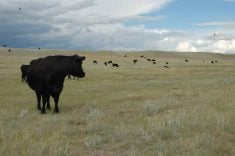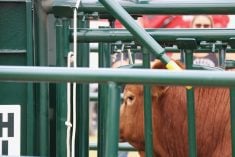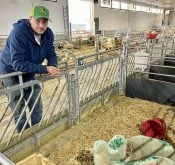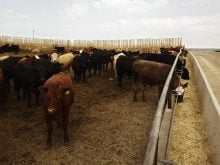FORT MACLEOD, Alta. – Neither rain nor snow nor the worst flood in years could stop the Western National Goat Show from happening in Fort Macleod.
Nubians, Saanens, LaManchas, Pygmies, Boers, Angoras and French Alpine goats from the four western provinces were all there to be rated, classified and judged. Breeders came from as far away as Ontario for the three-day event that lures the best in dairy, meat, fleece and pet stock.
“People love goats because they’re so personable,” said Jill Tyndale, who has 30 goats at her Abbotsford, B.C. farm.
Read Also
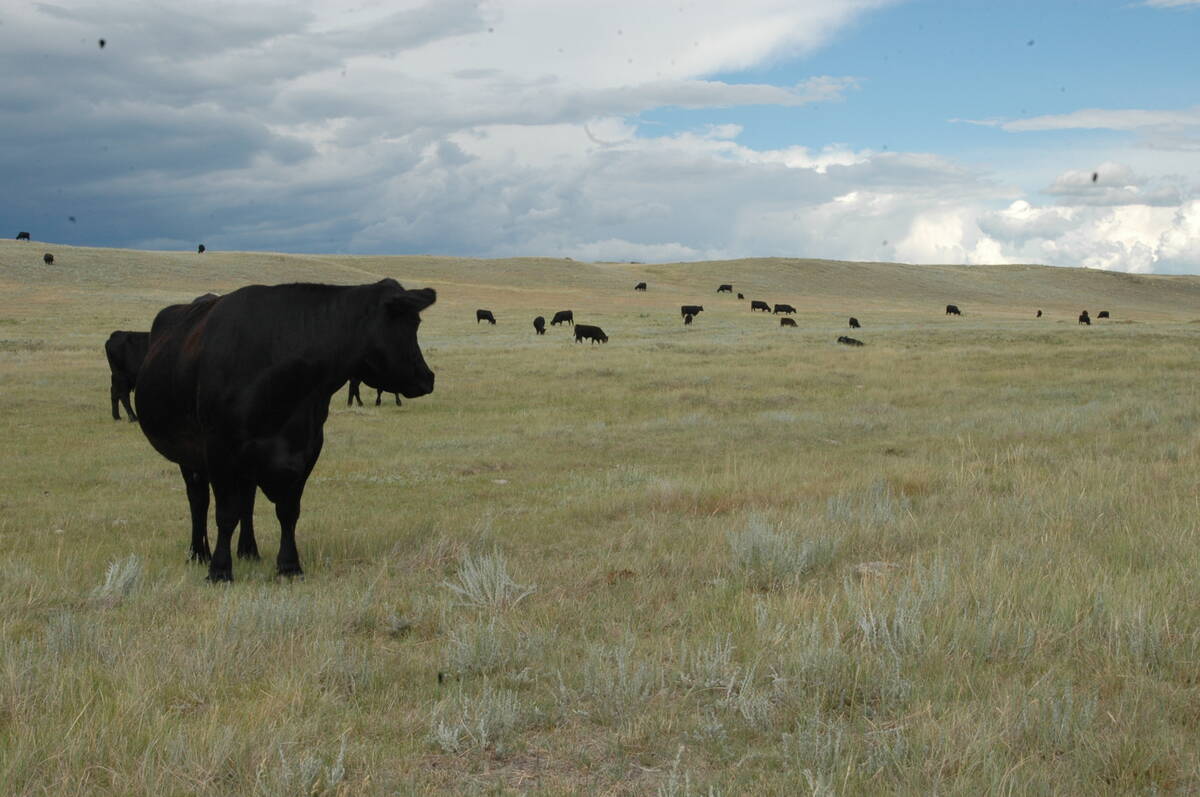
Canadian Food Inspection Agency slammed for handling of bovine tuberculosis case
The federal government leans heavily on producers to “take one for the team” and risk their livelihoods without any reassurance of support.
She milks by hand, eight Saanen goats, twice a day.
“They (Saanens) are like the Holsteins of the cow industry,” she said.
In British Columbia, most breeders use the milk at home or feed it to livestock because sales and distribution are tightly regulated. The marketing is more work than many are willing to handle, she said.
Nina Stender is a breeder who runs a commercial dairy. She got her first dairy goats in 1989 intending to focus on the show circuit. But by 1991 the goat herd had increased from 20 to 100. She realized she needed a dairy contract to use the surplus milk.
Herd expands
“I wasn’t out to buy a dairy herd. I went out to buy a show herd and got so many ….” she said. Females average two to three kids at litter so a herd can multiply quickly.
The goats are milked twice a day by machine in milking parlors on her Aldergrove, B.C. farm. Besides help from her children and husband, there is one part-time hired hand. The milk is sent to Stormy Monday Dairy for pasteurization and is sold through Dairyland Foods. Most is sold as fluid milk.
Goat milk is also made into cheese and produces a light tasting, white butter.
Most of her herd consists of Nubians which are valued for their high butterfat of five to nine percent compared to other dairy breeds whose fat content is about three percent. Nubians range in color from black to brown to dappled and have long, floppy ears. She also milks some Saanens which are sleek, white goats bred for high milk production.
In summer, her goats give about 450 litres per week, dropping to about 350 litres in winter.
Stender recommends goat milk as the next best substitute for mother’s milk over commercial infant formulas made from soy byproducts. It’s cheaper and easily digested by infants.
“This is a natural product. If you have to put your child on formula, this is the thing,” she said. “It’s already got an enzyme that’s one stage towards digestion.”
Another avenue for goat producers is the meat market, especially in B.C.’s Lower Mainland with its high ethnic population. Stender sells her excess males for meat.
“I could sell 100 goats a week,” she said. Many buyers want a dressed carcass of about 10 kilograms.
Getting into the goat business is relatively cheap. The animals don’t need a large pasture, and a good dairy goat costs about $250.
“They’re more work than a cow. But you’re more than compensated for that. I’ve never known a cow to cuddle up with you in a stall,” said Stender.



